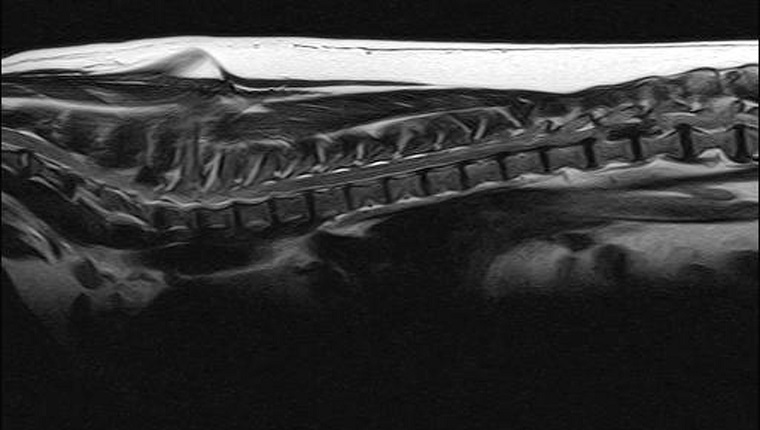A ruptured disc is a condition that affects a dog’s spinal cord. It’s also referred to as a herniated disc. It appears more commonly among smaller dogs, including Chihuahuas and Dachshunds; although, any dog can suffer from a ruptured disc.
The cause is often trauma, like injuries from being hit by a car or falling from a height. You can often notice a dog with a herniated disc by the way they become less active and mobile, and by the way they adopt a slumped posture.
If you see concerning signs or symptoms in your dog, then you must consult your veterinarian for a proper diagnosis and course of treatment. Here’s what you should know about the symptoms, causes, and treatments of ruptured disc in dogs.
Symptoms Of A Ruptured Disc In Dogs
A ruptured disc can bring on a number of symptoms that relate to the dog’s mobility.
Some of the most common symptoms include:
- Lameness
- Becoming less coordinated
- Seeming weak and lethargic
- Inability to control their bladder
Causes Of A Ruptured Disc In Dogs

A ruptured disc is often the result of the canine suffering from physical trauma. Common examples of this include being hit by a car or moving vehicle or falling from a great height.
The impact of the incident can tear the dog’s annulus fibrous, which is the outside fibrous layer of each individual disc.
Along with trauma, certain dogs can also suffer from herniated disc if they are experiencing a premature aging process, which can cause the discs to degenerate.
Treatments For A Ruptured Disc In Dogs
If your veterinarian suspect yours dog is suffering from a ruptured disc, they’ll ask you about any recent incidents or events that might have caused the condition. Your vet will also carry out a physical examination of your dog. In many cases, vets will carry out advanced imaging to confirm their diagnosis.
In terms of treatment, many cases require surgery. This process involves drilling a hole in the vertebrae. Vets can also prescribe anti-inflammatory drugs and pain medication as part of a dog’s recovery regimen.
Dogs also need a sustained period of rest to recover, preferably inside a suitable crate or small room that will place a limit on the dog’s movement.
Has your dog ever suffered from a ruptured disc? How did you help your dog recover? Tell us all about it in the comments below!









